-
About
- About Listly
- Community & Support
- Howto
- Chrome Extension
- Bookmarklet
- WordPress Plugin
- Listly Premium
- Privacy
- Terms
- DMCA Copyright
- © 2010-2025 Boomy Labs

 TWP
TWP
Listly by TWP
A collection of travel anecdotes from different adventurers
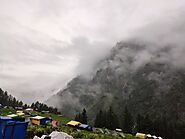
The Kasol to Kheerganga trek is one of the most scenic treks in India. I had taken this trek a few weeks ago and I’d give anything to go back. Despite being only 2 days long, it takes you up to the Kheerganga springs, nearly 13000 feet above sea level, while crossing Barshaini, Rudra nag waterfall, and the villages of Kalga and Pulga.
After taking a train to Delhi, I drove up to Kasol with my friends. We had never been to Himanchal before, and this trek seemed like the best way to start. We started our Kheerganga trek around 9.30am in the cold but sunny weather. Kasol is beautiful. There were lush trees all around, each a different height and shade of green. We were literally trekking on the edge of a forest with greenery surrounding us. We trekked our way up to Rudra Nag, an infamous serpent shaped waterfall. This waterfall was snuggled between green mossy rocks and foliage and the sight was so gorgeous. I never usually take note of waterfalls, but this one in particular was just so serene to look at. Definitely worth trekking past. Next we passed the sister villages of Kalga and Palga. The sheer simplicity of the villages was something unreal. The houses were small and quaint, the people, who I presumed would be annoyed with all the trekkers they constantly see, were actually warm and friendly. The freshness of that ‘wet grass’ smell, mixed with a sort of ‘masala chai’ smell was the perfect concoction. And it was so clean! It made me wonder why everyone wants to run to large cities, when true beauty is in villages like these.
Finally, after seven and a half hours of a rather laborious trek, we finally reached Kheerganga. I was smitten by it. We were surrounded by conifers and pine trees, with the Pin Valley National Park visible in the distance. I didn’t know such a place could exist in India! After setting up the tents, everyone in our group dipped our feet in the hot springs nearby and just relaxed. After being on foot the whole day, this was a treat to our worn out muscles. The spring water was hot, soothing and perfect in the cold. After, we started a bonfire. Singing, story-telling (especially horror), games, stargazing, gossiping and a little dancing, set the perfect ambience for the night. A group of 15 or so strangers became a family that night and that is something none of us will ever forget. After a night under the stars, we headed back to Kasol the next day.
This trek was a perfect end to my very hectic week and I’m sure it will be the same for you as well. Many trekkers even visit Barshaini on the way to Kheerganga, for it’s stunning views of the Parvati River, the Manikaran Gurudwara, and it’s offbeat, rustic wooden bridges. Next time, I shall definitely be going there too.
If you’re looking for a cheap, adventurous, quick and absolutely gorgeous getaway, the Kheerganga trek is meant for you.
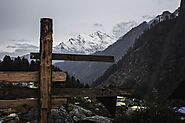
When your best friend lives for adventure, you make it a point to give her just that on her special day. Alia and I have been friends since our first day in school. And every year, I try to do something adventurous on her birthday. Like they say opposites attract, we have always been quite opposite to each other and people around us wonder how we still get along.
I have always loved going on treks and hiking and tried a lot of adventure travel. But Alia, on the other hand, preferred staying in the comfort of her home reading, writing and studying.
This year, for her birthday, I wanted to do something that I had never done before. Something that she wouldn't have guessed in the wildest of her dreams and what is better than introducing her to adventure travel. I decided to take her on the Kheerganga Trek.
The route of Kasol to Kheerganga trek had always been on my ‘places to visit’ list and it looked fascinating. There is an adventure, beauty and the serenity of the Parvati Valley and I knew for sure that my friend would enjoy the stunning views on this trek. Also, it’s not too hard, so I chose it because I wanted her to have fun and relax, not get exhausted. So, I planned, booked the tickets and took her on the trip that I was sure she would remember forever.
We reached Himachal Pradesh just 2 days before her birthday. She had never been here and hence she was really happy. I was relieved as now I was sure she would enjoy the rest of the trip as well.
We reported the Kasol campsite at 9:30 hrs. Kasol is beautiful and peaceful. From here we headed to the Kasol market. Here we began our trek to Chalal. We spent some time in Chalal. Alia loved every bit of it and the scenic beauty of this place doesn’t let the walk tire you. We began our return trek to Kasol and stayed in tents here. It wasn’t my first but my friend’s first time in tents. Under the starry skies is where we celebrated her birthday. Our fellow trekkers also joined us in the celebration along with the mountains.
The next day we woke up to the chirping of birds and began the Kheerganga Trek. We came across the stunning serpent-shaped Rudra Nag waterfall. The thing that we enjoyed the most was the trek across the twin villages Kalga and Pulga. After the trek, we visited the natural hot spring in Kheerganga and retired to our tents that offered views of the peaks in the Pin Valley National Park.
Today was the day of our return to Kasol. I don’t think any of my surprises in all these years had made my friend as much happy as this trip made her. The adventurer in her woke up and I knew now there was no stopping.
We began our return trek to Barshaini and took public transport to reach Kasol.
The Kasol to Kheerganga trek made me realise that adventure and nature is the best gift you can give someone.
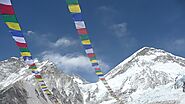
Any avid trekker out there will agree with me when I say the Everest Base camp trek is the ultimate. I had it on my list as well but wasn't sure whether I will ever be able to do it. It’s one of the best treks in Nepal - correction, world - and a dream for a trekker like me. Imagine seeing the highest peak in the world, and also getting to see peaks like Ama Dablam, Lhotse and Makalu – I didn’t want to miss it come what may.
Before I could pack my bags and set off, I had a lot of groundwork to do. Some extensive Googling led me to an adventure travel site whose executives helped me out with everything from the Everest Base Camp trek cost to all I needed to do to train for the big feat. When I decided to go, I took up a strict routine of fitness and health. I didn’t want to go there and fall ill or not complete the trek. I began running, yoga, cardio, and I ate a much healthier diet. The good thing about the trek is that it helped me to quit smoking as I wanted to be fully fit.
The incredible Everest Base Camp trek made such an impression on me. To this day, I have dreams about it, and I remember it very often. It taught me how important it is to preserve nature as it’s something that can never be replaced.
I was absolutely stunned as I walked through alpine forests, with towering pine and oak trees. The Dudhkoshi River was flowing close by, and we trekked past icy glaciers and herds of yaks. The beauty that I witnessed on the EBC trek was overwhelming. It was better than any adventure tours I’ve ever been on. We spent nights in tea-houses that were cosy and charming, ultimately reaching Mt. Everest base. During this incredible trek, I scaled the Kala Patthar mountain, which is opposite Mt. Everest to experience the mesmerising sunrise view of the Himalayan range.
How my days went by
Day 1: Hello Kathmandu!
This trip allowed me to visit Nepal and explore the country. I arrived at the Kathmandu International Airport. From here I was picked up by a tour representative and escorted to the hotel. After taking some rest I spent time exploring the city, visiting their markets and also tried the traditional cuisine and it was delicious. I then retired to my hotel.
Day 2: Flying to Phakding
I woke up pretty early, the excitement of finally doing the Everest Base Camp trek didn't let me sleep. I headed to the airport and boarded a domestic flight to Lukla. The view of the mountains was gorgeous. I along with my fellow trekkers reached Lukla and from here we began our trek to Phakding. The trek felt like walking in paradise with a pleasant view, through forests of pine and oak, chirping of birds and nature to your company. I don't know about feeling tired but I sure had butterflies in my tummy thinking about EBC and the current nature's beauty. I was floored over by this scenic beauty. We reached Phakding late afternoon and stayed at a tea-house overnight.
Day 3: Peeking at the Everest peak from Namche Bazaar
Today was the day when we would get a glimpse of the Everest. We entered the Sagarmatha National park and took the parallel path that leads to Dudhkoshi River. And the moment arrived, when, as we crossed the suspension bridge over the river, I could see the Everest. After a rather uphill climb in the final trail, we reached Namche Bazaar and stayed at a tea-house at Namche Bazaar.
Day 4: Acclimatizing at Namche Bazaar
I rested and acclimatized to Namche’s high altitude. Saw the famous Everest View Hotel and witnessed the peaks of Everest, Lhotse amongst others. Stayed overnight in a tea-house.
Day 5: Peace at Tengboche
We did quite an easy trek to Tengboche. The route through the forest was filled with pines and magnolia. Witnessed the peaks of Nuptse and Thamserku. Visited the 300-year-old monastery of Tengboche and stayed at a tea-house at Tengboche.
Day 6: Through forests to Dingboche
Visited the village of Dingboche. It's a steady march uphill along with the dense greenery that turns into sparse vegetation upwards. Overnight in tea-house at Dingboche.
Day 7: Acclimatizing at Dingboche
Rested and got acclimatized to Dingboche’s high altitude. Took a short hike to the Pangboche Valley. This saw an exciting day as I interacted with Sherpa natives and spotted yaks, it was dreamlike. Reached to Dingboche by afternoon and spent the night in a tea-house.
Day 8: A heavy hearted trek to Lobuche
We trekked from Dingboche to Lobuche. It is an easy trail. En route, we stopped to pay our respect to the mountaineers who lost their lives in their quest to summit Mt. Everest at the memorials erected in their tribute. Stayed in a tea-house at Lobuche.
Day 9: The day we all waited for
This was the longest trek that took us to the Everest Base Camp. The trail was rocky and we walked parallel to the Khumbu Glacier. We reached the site of the Everest Base Camp! Eureka! The moment was finally here. Everything about that place was unreal! Beauty that I’ve never witnessed before. After almost 30 mins we trekked to the lodges of Gorakshep where we stayed in a tea-house.
Day 10: A sunrise to remember
Reached the viewpoint of the Kala Patthar mountain just in time for the sunrise. Descended to Gorakshep and walked to Pheriche.
Days 11-14: Tracing our steps back to Kathmandu.
We descended down all the way to Kathmandu, going through the stunning landscapes, this time being the ones that got to share our stories with starry-eyed trekkers making their way to the Everest.
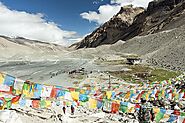
As someone who has been in love with trekking since I was a little kid, the Everest Base Camp trek was nothing short of holy for me. When I started training for it three months ago, I was nervous.I thought there was no mountain high enough and started research on scaling Mount Everest, or trekking to its base camp at least.
After reading everything from tweets to sports journals, I decided it’s better to go with a good agency rather than hiring a porter or guide, or marrying a Sherpa. I read the reviews and finally made my booking two weeks later. I spent some time figuring out everything from the Everest Base Camp trek cost to all I had to carry and train for. Then I prepared for about seven weeks, and finally I was standing at the airport, with my trekking backpack next to me.
I landed in Kathmandu, where I was greeted by my enthusiastic operator. He took me to a hotel in Thamel, which looks like a set of a Bollywood music video. Many stalls and shops skirt its narrow streets, which look smaller thanks to the rows of hanging flags and lights. It has a thriving nightlife. After I met up with my group in the hotel, we went to eat something local and enjoyed some live music.
From Kathmandu, we flew to the Lukla airport. It was a very small plane and it goes between huge mountains, so it can be quite scary. But I was struck by the beauty of the white of the snow against the green of the Solukhumbu valleys. After breakfast we started for Phakding. The agency employed Sherpas to carry our luggage all the way up the mountain. None of them used the help of yaks! We walked up the steps, and I could feel the difference of the thinner air. We walked on for three hours, basically getting our groove on and getting a feel of what was coming.
The longest walk was our trek from Phakding to Namche Bazaar. It took us around seven hours. I was quite slow, as the trail had gotten quite steep. The clouds were all around, and the Dudhkosi river was beside us. Every now and then, a herd of huge yak would pass by. We’d been instructed to press ourselves against the rocky side of the trail when the yaks came by – never against the edge where the drop was, in case the yaks brushed against us and knocked us down. We even had to cross a long swinging metal bridge over a particularly deep valley. It was all so fairy-tale like and thrilling.
Even though most of my walk were moments of wrestling with thoughts of whether I should put my sweater on or take it off, I took notice of how steep the trek to Namche was. We had to take a day to acclimatise to the thinning air. Namche has two money changers but I was already running low so I took a walk around and visited the cultural museums, and withdrew some cash. The next day, we headed to Tengboche. We could see the Everest in front of us the whole way! It rained a little but when the clouds cleared up we could see mountains all around us, like we were in a snow globe that someone stopped shaking. We took another day off in Dingboche after crossing clear streams, wooden bridges, one massive iron bridge and experiencing our first snowfall.
The trek to Lobuche was like practice for the Everest Base Camp trek. It was getting really cold, like at least -15 degrees cold. It was also getting windy. The trees had faded into low shrubs and rocks, and the views were stark and dramatic. We had to climb across the Thukla-Dukla Pass, which seemed almost unbearable but we did it. Harsh conditions aside, it was harder to take in the reality of the dozens of memorials that stood there in honour of dead summiteers. It was a sober moment for everyone to think about those who never made it back home from here.
As we approached the base camp, I developed a mild headache, thanks to the altitude. I wasn’t too hungry but I forced myself to take a few spoons of porridge and some medicine. Soon after that, I felt better. When we finally arrived at the Everest Base Camp, it felt so good! We were here and we had beaten all the odds. If I was slow before, I must have crawled to Gorakshep as we crossed the 5,000 metre/16,400 feet mark and from Gorakshep to the camp. But we were surrounded by mountains and they were so close, it really did feel like we were on the top of the world.
Kala Patthar is a short trek away from Everest Base Camp, but it gives you the best view point to see Everest as the first rays of the rising sun hit it. You have to wake up at 3:00 a.m to reach there in time for dawn. I was feeling tired and I didn’t want to wake up so early, because we had to trek back also, but I told myself I’d be crazy to miss this chance. It wasn’t like I was going to come back here soon.
I woke up at 3 a.m. with the other trekkers and was arguing myself the whole time. One part of me didn’t want to go out into the cold, and just wanted to go back to sleep. The other part of me said to imagine getting back to my city and thinking about that one morning that I couldn’t sacrifice my sleep. So I listened to the latter and laced up my hiking shoes.
It was really tough to get going, but once I was on the trail with the other trekkers, in the dark, I felt so strong, so alive. The excitement of the darkness, the lightness of the air, the reality of being higher than everyone I knew in my life gave me such a thrill. We got there in time for sunrise and I saw Mount Everest turn golden as the day dawned. I had tears in my eyes as I stood there, and would not have missed it for the world.
I was a little relieved to return, but somehow, I hated turning my back on Everest. I’d gotten so accustomed to seeing it while I trekked. On our way back to Namche Bazaar, we went to the Khumjung monastery to see a yeti skull. From Namche Bazaar back to Lukla, we saw other trekkers, who still had the whole journey in front of them. There are so many who try this extreme adventure. I didn’t know any of them, but I saw myself in them, and we exchanged happy greetings and lots of tips. I managed to buy some meditation bowls and trinkets for my friends and family, but I didn’t need a souvenir myself - I got the experience of a lifetime.
Though I was hoping for Maggi and chai, like my other treks – I didn’t realize how different the food would be on this trek. So much better! I ate Tibetan bread and omelettes for breakfast at a tea house. I devoured pancakes, apple porridge and French toast for breakfast over the course of other breakfasts. I also ate a lot of chocolate cake on the rest days in Manche and Digboche. The yak cheese pizza is too good too. No doubt the view makes it the best meals you will probably ever have. Back at Thamel, I made a new friend and we went momo-hopping, and had as much thukpa as we could stomach.
The Everest Base camp trek cost me nothing considering the life-changing experience I got to live. I got to scale the base of the world’s highest peak, I made friends for life, I discovered a whole new culture, and so much more. This trek was my pilgrimage, and I’ll never forget it.
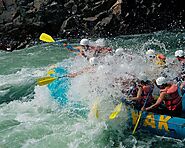
You could call me the textbook definition of an adventure junkie and a water baby. Anything to do with a kick of adrenaline, I’m in. Add a sea, river, lake or anything in between to this equation and I won’t even think before jumping to the opportunity. Given that, it’s obvious that I have tried out both Kolad and Rishikesh rafting. River rafting is usually associated with Rishikesh but not many know that you can find a similar experience in the Maharashtrian outback of Kolad. If you’ve gone for river rafting in Rishikesh, or are simply intrigued by it, you will most likely be able to find a Kolad rafting package that gives you just as adventurous an experience!
Rafting in Rishikesh is carried out on the pristine waters of the River Ganges in Uttarakhand. Kolad rafting, on the other hand, takes place amid the Western Ghats of Maharashtra on the Kundalika river. I’m from Pune, so Kolad is a no-brainer option for me when I am in the mood for rafting, whereas Rishikesh would be the same for someone that’s placed in Northern India, perhaps near Delhi. Both locations make for an amazing weekend getaway, or if you’re willing to take the time out to plan a trip from the north out west or vice versa, they can be thrilling trips accompanied by the numerous treks surrounding the areas. Talk about making the most of your travels!
Any Kolad rafting package that you come across will only offer a 12 km rafting session. Your route will be dotted with rapids that are easy enough for beginners and thrilling enough for experienced rafters. River rafting in Rishikesh, however, offers a wide range of options to choose from. You have sessions that last 9 or 16 kms that are fit for beginners, or can take on the more challenging 24 or 32 km sessions that are reserved for more experienced individuals that know their way around ravenous rapids.
Whether you visit Kolad or Rishikesh, you can choose to only book river rafting or you can book overnight stays as well. I stayed overnight in Rishikesh which allowed me to explore the other activities like nearby treks, bungee jumping and Flying Fox. I mostly visit Kolad for day trips and have camped there just once. It’s just as thrilling as camping along the tributaries of River Ganga, and I also enjoyed jet ski rides, rappelling and ziplining in Kolad.
Whether you pick the best rafting in India at Rishikesh or choose the more offbeat Kolad rafting package, I can assure you that you’ll be in for an adventure of a lifetime. So pack your bags, get set and go!
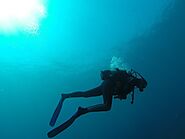
I have never been known to love anything adventurous. I find happiness in my cup of coffee, immersed in a book while I feel the breeze on my face in my balcony. A lot of stars had to align for me to agree to go scuba diving in Goa with my husband. It was his birthday and scuba diving was always something he spoke about trying, and so, I couldn’t say no.
We chose a Try Dive instead of a proper course, mostly due my apprehensions. Little did I know that I’d dearly regret not opting for anything more than our 20-minute dive as soon as it was done and dusted.
We met our instructor at the Calangute beach where he ran us through all the safety guidelines and training. My nerves stopped me from easily remembering all the instructions but I eventually got around it. Soon, we were on the boat, on our way to Grande Island.
As the boat halted at the dive spot, I shot a prayer and jumped into the open water with my eyes clamped shut. I was too afraid to open them - what was I supposed to expect? Darkness? Creepy crawlers? Emptiness? I slowly opened them when I felt my husband nudge me and I was awe-struck, to say the least. Everything around us was spectacular. Colourful fish, bright corals, sea urchins, lobsters, turtles all floated around in the bright, sunlit blue waters. We spent the next 20 minutes exploring the nooks and crannies of the underwater world, before coming back up to the surface, hoping for more.
We had to head back to the mainland, which was a bittersweet feeling. We were leaving something magical, but we knew we had a few days of exploring the city and its beaches as we celebrated my husband’s birthday.
We left from Goa after some truly memorable days spent there, but we didn’t head back home to Ahmedabad. Instead, we went to Mumbai to pay an old friend a visit over the weekend. I felt like I was back in my college days as we chatted our way well past bedtime, reminiscing the good old days. She was surprised when I told her that I had gone scuba diving in Goa (“Who are you and what did you do to my Kiara?” were her exact words, if I’m not mistaken). I said that I may be turning over a new leaf, slowly developing a penchant for adventure. That was when she decided that a quick drive down to Kolad would be perfect for a newborn water baby like me.
Her plan was to take me river rafting in Kolad. The old me would have groaned and sulked, but now I couldn’t wait to see what other things I had been missing out on.
Saturday morning, the three of us made our way to the rafting site in Kolad at 8:30AM, our energies nothing short of electric. We were to camp in Kolad for the night, so we checked in and got ready to go rafting. At the banks of the Kundalika river, we got briefed about the session, geared up and hopped into our rafts.
Rafting in Kolad, although a water sport just like scuba diving, was a whole world apart. In Goa, I was enjoying swimming with the fish and admiring the corals, feeling more at peace than ever before. But here, in Kolad, I forgot what serenity meant for the next two hours.
We rocked through ravenous rapids, got drenched in the chilling river water and let out collective hollers as we fought the river. It was like nothing I had ever experienced before, my adrenaline was coursing through my body a million times faster than the speed of our rafts. Finally, after the 12 km stretch was over we entered calm waters. With the instructor's green signal, we dropped our paddles and jumped into the serene river, floating on our backs and slowly coming down from our high.
I remember feeling that same peace I felt in Goa - water all around me, staring at the open skies and overgrown trees, listening to the shrill tweets of hundreds of birds, and smelling the fresh forest air.
Nature, whether way above, below or around water, always has an astonishing ability to soothe you, be it calming your nerves after your first dive or slowing your heart after two hours of rigorous rafting. Both these experiences have changed the way I look at adventure; it’s not always about doing something dangerous, it’s about being right there in the moment and living it to its fullest!
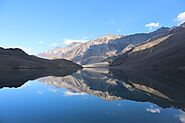
Bali, Maldives, Goa, Dubai. Hundreds of my batchmates graduating but these are the only places I’ve been hearing about. I wasn’t keen on a graduation trip in the first place, I’ve never enjoyed elaborate trips and fancy AirBnBs by the beach. But after spending three long years in college and finally having my degree in my hand, I did feel that it called for a celebration. So, I decided to celebrate it my way – with a trek, this time to Hampta Pass.
My parents found it strange that I decided to go for my Hampta Pass trek all by myself. Apparently, graduation is supposed to be a celebration with all the friends that helped me get through the years. But, hey, my celebration, my rules, and so I set off on my trek with a bus ride down to my pick-up point in Manali. I’d chosen to go with the same operator who I’d gone on multiple Himalayan treks with, so I knew this trek was about to be awesome, just like every other time.
The ride to the beginning of the trek was spent chatting away with some of the trekkers that would be joining me, and I enjoyed gathering stories about their various travels, taking mental notes on which of those I’d like to visit someday.
Our trek to Chikha, the first pitstop of the Hmapta Pass trek, started with stunning views of the lush Kullu Valley all around us. It was an easy climb and we reached the campsite soon. We checked out our tents and gobbled on some freshly cooked, piping hot dinner that the amazing cook had whipped up for us. Our nights were spent under clear starry skies, huddled in our sleeping bags to keep the cold away.
The Himalayan peaks somehow seemed a little more majestic in the warm morning glow of the sun. That day, we even caught views of the infamous Dhauladhar range as we trekked through verdant landscapes and crossed rivers on our way to the next pitstop. We reached the Balu ka Ghera and the Hampta Pass was clear as day in front of our eyes. The next morning, we woke up with our eyes on the prize as we began our challenging day towards the pass.
With each step, the terrain grew steeper and we climbed higher and higher. The mountains served as a constant backdrop as we carefully made our way to Hampta Pass. There, I could see before my eyes the reason why the Hampta Pass trek is special to so many people. The scenery almost morphed from green valleys of Kullu into desolate, sepia landscapes of Lahaul-Spiti. It was a magical sight that left me reeling until we reached our campsite and sat down to rest.
As if the mesmerising beauty of the pass wasn’t enough, the following day, we trekked to the serene Chandratal Lake. Its teal waters looked like a gateway into another world, one where time had stopped, allowing you to get lost within the mountains of the Spiti Valley for as long as you wanted. I felt so little, my so-called feat of graduation trivial, as I gazed at the gigantic mountains reflected in the lake, untouched by time and all its tests. I sighed as I got to my feet, joining my group and heading back to the campsite, while leaving a part of me in the world beyond the waters.
The next was our last day. We woke up in the lap of some of the most legendary mountains for what was going to be the last time in a while. The other trekkers and I shared some photos as we drove back to Manali, promising to stay in touch as our trip came to an end. I’m thankful to have stood my ground about the Hampta Pass trek. After all, there’s no place like the mighty Himalayas, most definitely not an AirBnB by the beach.
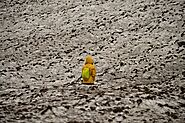
I’ve trekked to some of the most iconic locations in India. Some places stay in your heart right from the first time you see it, and some creep in without you ever visiting that destination, staying with you as a craving, a yearning, a desire. The latter is what Hampta Pass is for me. I’ve been to Himachal for many treks, but somehow, this spectacular mountain pass and the glimmering Chandratal Lake have always eluded me. And as I got more and more busy with my work and family, this desire seemed to go further and further away – until my birthday, when my husband gifted a spot on a 5-day-long Hampta Pass trek just for me!
I spent the days leading up to the trek mentally going over the itinerary again and again. I was at office, or at home, but my mind was wandering between the Kullu and Spiti Valleys, wondering if they’d change from lush green to rugged sepia just how all the travelogues described the Hampta Pass trek.
With a triple-checked backpack and tonnes of excitement, I headed to Manali to begin my journey to Hampta Pass. A few hours of travelling later, I met with my operator at the pick up point where he introduced me to my fellow trekkers. Our 2 hour ride to the beginning of our trek seemed short as we exchanged stories about our previous treks. Some were first-timers and were still in the 12th grade, and I enjoyed diving into my treasure trove of trekking tips to share with them. We then began our trek to Chikha, which was another 2 hours away. Walking past the green valleys of Kullu reminded me just how much I missed the beautiful Himachali landscapes. I knew this trek had much more in store for me in the coming days! We set up camp at Chikha and readied ourselves for a gorgeous night under the stars.
We refuelled with some freshly cooked eggs and tea in the morning. Some days, I miss that amazing cook who kept our tummies happy throughout our days in the mountains. With charging energy, we headed forward on our trek and were greeted by majestic views of the Dhauladhar range and Indrasan Peak. That day, I even got to do my favourite thing on a trek – river crossing! We held hands and formed a chain so that we prevent ourselves from tripping into the water as we carefully tread across the river. I even took the chance to cup my hands and splash some of the chilling water onto my face to freshen me up for the rest of the trek. We reached a vast opening between the mountains, which would be our campsite for the day. Hampta Pass was close and we could see it in all its glory, a little in the distance.
The next day, we had our eyes on the target as we set out to our ultimate destination – the Hampta Pass. It was a challenging day as the terrain grew steeper and we climbed higher and higher to over 14,000 feet above sea level. Once we crossed the pass, I could see before my eyes every single detail all those travelogues described and all those photos captured. The scenery gradually shifted from the lush green of the Kullu Valley and transformed into the desolate, sepia landscapes of the striking Spiti Valley. I felt like I was witnessing the greatest magic trick nature could pull on us. We eventually reached our campsite and put our tired bodies to rest, our minds still reeling from the sights we saw.
Yet somehow, the best part of the trek was yet to come and the next day would show us just that. We hiked our way to the serene Chandratal Lake and boy, did it shatter all expectations. Clean, untouched and azure, its waters reflected the mighty mountains of Lahaul-Spiti, creating a whole new world within its reflection. It was unlike anything I’d ever seen before; I was mesmerised as I sat by the lake, wishing I could dive into the new mirrored world, but it was soon time for us to leave and head back to our campsite.
We woke up in the lap of the Himalayas for the last time on our Hampta Pass trek. We drove back to Manali but the driver made sure to stop at the Rohtang Pass so we could take some pictures, but I just silently bid goodbye to the mountains. It was an experience that I had dreamed of for as long as I could remember, and now, having done it, it stays in my heart forever. I only wish I don’t wait this long to visit Himachal again, especially now that the fire of trekking has rekindled in my soul!
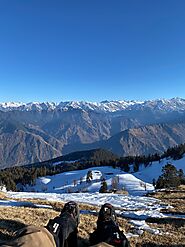
Winter has always been my favourite season. Layered up in fuzzy sweaters and blankets, enjoying piping hot cups of chai and breathing in the crisp air brings me loads of joy. One winter staple I was yet to experience, however, was snow. And so, to tick that off, I decided to go on a trek to experience it. Fortunately for me, since I was in Chandigarh, iconic Himalayan snow treks were not too far for me. Trekking in Uttarakhand and Himachal Pradesh had many such options, so, after a bit of research, I singled out the one I felt was perfect for me.
The Kedarkantha trek is a popular snow trek among adventurers from all around the world, and reading numerous travelogues and skimming through photos had me convinced. I booked my seats for the next departure and began prepping for the big day. I looked up a few packing lists and gathered all my essentials and soon it was time for me to depart for Dehradun.
I was greeted by the operator at the station and was driven down to Sankri along with a few other trekkers who were in my batch. The long drive went by quickly as we chatted, admired the beautiful landscapes on either side of the roads and caught a few naps here and there. We reached our guesthouse by evening and caught up on some much-needed rest after a delicious dinner.
The trek began the next morning, after a breakfast enjoyed amid snowy mountains. We trekked through thick forests on our first day as we made our way to the Juda ka Talab, which was frozen in the cold winter. Right off the bat, I knew the next few days of trekking in Uttarakhand would be wonderful, with the perfect blend of adventure and beauty in equal measure. This was my first experience with high altitude trekking, so by the time we reached the lake, I was exhausted and welcomed the cosy tents by the serene lakeside wholeheartedly. I sat outside my tent, huddled in some warm shawls, and gazed at my surroundings, the biting cold freezing everything around me. It seemed as though time had halted, with the lake completely still and the mountains standing firm for eons. I sighed happily and joined the others for dinner before heading back to my tent to rest for the night.
The next day, we headed towards the base of the Kedarkantha peak. The route was moderately easy, but the thick snow made it slightly challenging to power through. We crossed several villages and even stopped at a few for a quick cup of tea and to mingle with the locals. I enjoyed hearing the legends of Lord Shiva and other tales that the locals gushed about. We soon reached the base, located in the middle of the Tons River Valley, and set up camp. The guide took us through the next day’s challenges as it had snowed quite a bit over the past few days, which would make the steep ascent to the peak even more challenging. He reassured the first timers that it would be a feat that they could easily achieve, given their rigour and experience from the past two days. With that positive energy, we ended our day with a hot meal and slept with the mighty Kedarkantha peak overlooking us.
Next morning, we began our ascent at the crack of dawn and enjoyed the beautiful views of snow-capped peaks. We made our way through dense pine forests and white meadows that would be lush with rhododendrons come spring. After a few hours, we reached the summit and celebrated with a round of chocolates that the guide had in his backpack. Our group took some photos to take home as an eternal memory of our feat. It was hard for me to stop smiling as I looked at the valleys and snowy stretches around me.
Alas, it was soon time for us to head back and we spent the next two days making our way back to Sankri. As we drove down to Dehradun, I could only think of how much I truly loved my snowy Kedarkantha trek. Though sad that it was over, I knew there’s a lot more in store for me the next time I decide to put on my trekking shoes!

Coming from a house that took every holiday season as an opportunity for an offbeat adventure, travel has always been in my blood. I’m from Gurgaon, so road tripping and trekking in Uttarakhand and Himachal Pradesh was common ever since I was a young girl.
Even after my marriage, the travel bug hadn’t left me. I’d drag my husband along on my trips, but everything changed after I had my twins. It was difficult enough to juggle between my business, home and babies, so travelling took a backseat. For years, our holidays were spent either at our parents’ places or at a comfortable resort, and it obviously left me longing for more.
As someone whose love affair with adventure dates back to her childhood, I wanted my children to see the world just as I did. And so, when they turned 11, I decided to recreate my first adventure with them – the snowy Kedarkantha trek.
When my husband and I broke the news to our kids, I was filled with joy to see the same gleam in their eyes as mine! The days leading up to the trek flew by quickly and it was time for us to set forth on our adventure. I had read many travelogues on travelling with kids and even spoken to my parents about their experience with little me, so I was ready with an extensive packing list, tonnes of excitement and a smidge of nervousness as we left for Dehradun, hoping that my kids would love the experience just as much as I had.
The trek operator was waiting for us at the station and we were driven to the start point in Sankri. Exhausted from an early morning of travelling, my kids fell asleep on the gorgeous ride while my husband and I admired what was only a precursor to the beauty we were about to witness on our Kedarkantha trek. 8 hours, a lunch break and a few chats with the operator later, we arrived at the guesthouse that would be our home for the night.
We began our trek to the first pitstop, the frozen Juda ka Talab, right after breakfast. My kids were buzzing with energy and simply watching them jump about and play in the snow was enough to recharge us and our fellow amused trekkers. The guide, too, was elated to have little kids join the trek, and was constantly feeding them tales and local legends as we made our way to the lake. The 4-hour trek through thick forests and snowy landscapes was tiring, so resting in our tents surrounded by gorgeous Himalayan views was welcoming. We had an early dinner and caught up on some rest to ready ourselves for the next day.
We began our trek to the Kedarkantha base early next morning after a hearty breakfast. The warm, freshly cooked meals were much appreciated amid our seemingly frozen surroundings. We trekked through vast meadows that were shrouded in white snow and passed villages where my kids befriended some local children. I was glad to see them thoroughly enjoying the nature and local culture, and I had flashbacks to the faint memories I made here when I was their age. Soon, we reached the base and set up camp there, to spend the night in the shadow of our imminent challenge, the mighty Kedarkantha.
An early breakfast and an invigorating pep talk from our guide later, we began our ascent to Kedarkantha peak. We were all excited to reach the summit, and trekked for almost 3 hours to reach the top. Once there, an intense feeling of accomplishment took over us. We all cheered as we looked around at the snow-capped peaks in the distance. We clicked pictures to immortalize our feat and my twins’ first ever adventure travel experience. Seeing their enthusiasm and complete lack of fuss, I was left wondering why I was apprehensive in the first place. Of course, most of it is owed to the wonderful guides, locals and fellow trekkers who kept them company and matched their childlike excitement, but I would like to believe that my travel gene has found its way to both of them! After relaxing for a while, we had our lunch and started our descent back to the base.
The next day, we traced our steps back to Sankri and bid the heaviest goodbye to the nature that welcomed us for the past few days. We were driven back to Dehradun and my kids shared a tearful farewell with the guide who showed them a whole new world that they were now in love with. Knowing how much this trek was loved by them (and myself!), I was sure this wouldn’t be our last time trekking in Uttarakhand. My kids pestered my husband and I to plan our next trek as soon as possible, and, needless to say, we were convinced even before they said a word to us!
